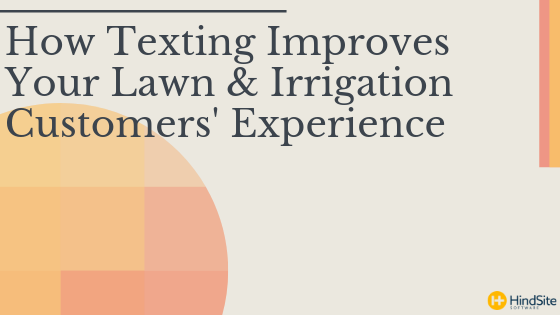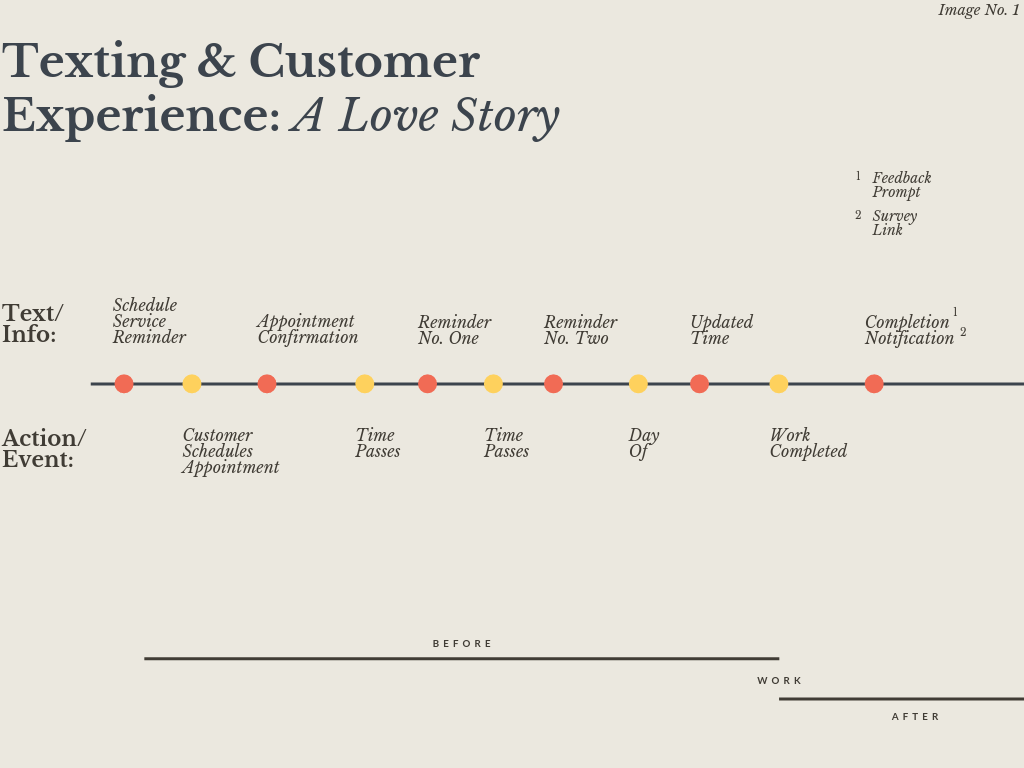
Like in all relationships, communication between your green industry business and your customers is key. Everyone prefers receiving the right amount of information at exactly the right time. Starting back with telephones, as technology emerges businesses will find ways to integrate these innovations into their operations. The most recent communication tech becoming more and more common is text messages (referred to as SMS).
Texting allows you to reach your customer directly on the surface level of their phone. For example, I have 2,000+ unopened emails. I know, it’s not the best habit. But I’ve never left a text message - whether from parents or a political campaign - unopened. There have been studies about this behavior. According to a survey by GetResponse, when sent by a business only 22% of emails get opened. On the other hand, 98% of business text messages get opened.
Another example, that shows the tangible results texting can have for a business. I came across this article that talked about a business having a 20% increase in the number of invoices paid on time after sending them by text.
Of course, customers don’t want to be bombarded with texts from a business. It’s important to pick the touchpoints and information that will alleviate confusion, cement agreements, and - most importantly - create a painless customer experience.
A good way to think about the relationship between texting and your business (and the services you provide) is by dividing the touchpoints and information by before a service is performed and after it’s performed and the work is done. With this approach, the first moments you could use texting in your business’s customer experience is the scheduling, confirming, or/and reminding of appointments.

This first section has the most possible interactions and is arguably the most important. Which of these initial moments you send texts depends on how you want to integrate this form of communication into your business.
You don’t have to use text for each of these touchpoints but for the sake of fully understanding the possibilities let's look at a scenario where you do. It’s early fall, the leaves are starting to change and you want to start scheduling and planning your winterizations.
You decide to send out a text to all your customers (and even leads) with an irrigation system reminding them to schedule their winterizations. With most texting providers this is done in a similar way to sending mass emailing. This type of interaction borders - and can even be defined as the bridge - between marketing and customer communication.
Now people are calling in and scheduling appointments. Naturally, this process varies from business to business. But now that they have a date and time you can send a confirmation text with their appointment date, time, and details.
The next touchpoint is sending reminders. How many you send and how frequently is at your discretion. On one hand, you don’t want to be a nuisance and on the other hand, you want to send enough to keep customers in the loop and prevent missed appointments. One option could be texting reminders a week before, a day before, and then on the day of, sending an update with up-to-the-minute timing (since we all know certain days get crazy and times can shift).
As we went over before, the majority of texting’s utility sits towards the front end of your customer experience. But that doesn’t mean when the work is done there aren't other ways to leverage texting. One simple, yet helpful, way is to send completion notification texts. Depending on the green industry services you offer and how elaborate you want to get there are a few options.
For example, your business offers recurring lawn care. You could send a simple text informing customers when the routine maintenance was completed and what was done. This can be helpful for customers who work all day and can never “tell” their yard was mowed.
Completion text can also cover your ass. If you push snow in the winter by sending a text with an image attached of the plowed property, it shows the customer that you were actually there so even if they wake up after a few additional inches fall they won't call you losing their mind. It also builds a tangible record of work in case of slip and fall incidents.
Texts are a great way to gather customer feedback and satisfaction surveys. A prompt asking for feedback or a link to a survey can be added to the completion text mentioned in the last section. We’ve mentioned it in past posts, but gathering feedback and conducting surveys can provide priceless insights into your business (what you are and aren’t doing well) and your customers (what their expectations are and whether you meet them).
With texting you can mold a smooth customer experience and manage or eliminate the obstacles that pop up during it. Instead of getting a barrage of calls you can get ahead of issues by sending customers the information they need.








